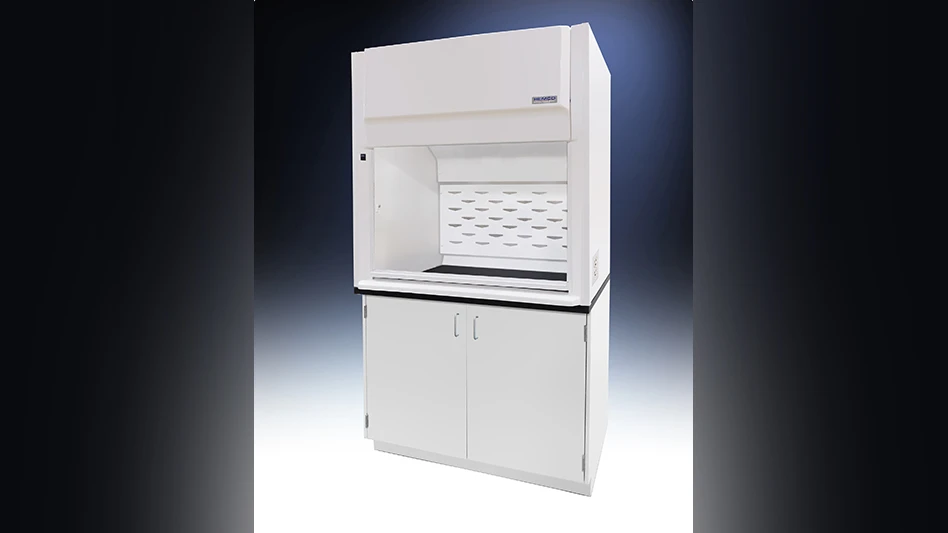 TOP: Foil resistors – introduced in the 1960s – feature a special alloy foil to serve as the primary resistance element. BOTTOM: The NASA qualification standard for metal foil resistors requires both a 100G-shock test and a 20G (peak value) vibration test. TOP: Foil resistors – introduced in the 1960s – feature a special alloy foil to serve as the primary resistance element. BOTTOM: The NASA qualification standard for metal foil resistors requires both a 100G-shock test and a 20G (peak value) vibration test. |
Resistors are electrical devices used to direct current flow through a circuit – in turn, producing a drop in voltage between two points. A vital component of most modern-day electrical networks and electronic circuits, resistors operate according to Ohm’s law which states that the current between two points of a conductor is directly proportional to the potential difference through the two points.
The level of resistance determines the functionality of a particular resistor. During resistor design, several factors require consideration. The necessary precision of the resistance is set by the manufacturing tolerance of the selected resistor, in accordance with unique application requirements. A maximum power rating of a particular resistor must be higher than the predicted power dissipation in a particular circuit. In addition, the temperature coefficient of resistance (TCR) may be another important factor if the application calls for high precision. The TCR is the relative change of resistors’ value when the temperature changes. For applications subject to large temperature changes, the TCR should be as low as possible.
Introduction to Metal Foil Resistors
Foil resistors – introduced in the 1960s – feature a special alloy foil to serve as the primary resistance element. These resistors offer superior precision and stability compared to most alternative varieties, in part due to the low TCR. The TCR of foil resistors is inherently low, having improved since their introduction to allow accurate use in many demanding applications.
The resistor technology of choice to respond to the demand on precision and stability during a large range of temperature change is quite often metal foil based. Metal foil resistors have a uniquely low TCR due to the proprietary properties of the nichrome foil and the mounting on a ceramic substrate. However, this unique foil construction also presents challenges to the manufacturing process – namely, to produce a sufficiently robust connection to the nichrome foil used in the construction.
Manufacturing Requirements
Industry-leading manufacturers have successfully met this challenge through a unique thin lead wire construction, and metal-foil resistors have seen efficacious use in a broad range of aerospace and data logging industries that require high precision. This successful manufacturing process consists of using a unique two-wire lead construction to avoid foil damage caused by lead vibration. This design allows flexible stress relief between the foil and the external lead wire, minimizing potential cracking or tearing of the foil at the wire connection.
 NASA’s specification S-311-P-813 – developed for the procurement of Space Level precision resistors – NASA specifically calls out (§3.3 Design and Construction) “resistor constructions using a thin metal foil element shall include a flexible intermediate conductor between the terminal lead and the foil (ex., a metal ribbon or thin wire).” NASA’s specification S-311-P-813 – developed for the procurement of Space Level precision resistors – NASA specifically calls out (§3.3 Design and Construction) “resistor constructions using a thin metal foil element shall include a flexible intermediate conductor between the terminal lead and the foil (ex., a metal ribbon or thin wire).” |
The NASA qualification standard for metal foil resistors requires both a 100G-shock test and a 20G (peak value) vibration test. To meet this standard, NASA has recognized the importance of wire terminations in metal foil resistors. Thus, in their Specification S-311-P-813 – developed for the procurement of Space Level precision resistors – NASA specifically calls out (§3.3 Design and Construction) “resistor constructions using a thin metal foil element shall include a flexible intermediate conductor between the terminal lead and the foil (ex., a metal ribbon or thin wire).”
Construction Processes
To ensure there is no damage to the foil during the welding operation, suggestions are to follow strictly enforced control procedures when starting with spot-welding setup, which consists of adjusting the weld parameters for each different lot of chips welded throughout the day. Specifications of the control procedures are in the welding process and ensure proper handling of the chips before and after welding to prevent damage. Procedures are also followed through lot archiving – which consists of performing a weld-pull test twice daily and recording the results along with the chip lot number and weld settings. Before commencing, critical spot-weld settings are checked. Checking of the solder joint on each two-wire lead also occurs before use in the welding process. Maintenance of lot identity for all spot-welds is a necessity, and performance of weld strength testing occurs repeatedly during the shift.
Further, if the particular order of resistors requires lead dissolve tests – including all resistors manufactured to the S311-P-813 specification and additional orders in which the customer requests the tests – to verify that welding pressure has not cracked the foil, multiple parts are selected twice each shift for analysis.
 Circuitry for space probes, avionics, and down-hole data logging must perform flawlessly under harsh conditions, including high vibration and extreme temperature changes. Circuitry for space probes, avionics, and down-hole data logging must perform flawlessly under harsh conditions, including high vibration and extreme temperature changes. |
Following NASA requirements, accomplishment of lead dissolve is by placing a beaker of welded assemblies and nitric acid into an ultrasonic cleaner for one-minute intervals until the lead completely dissolves from the foil pad. The weld area of the pad then receive visual inspection at 100X magnification for cracks using both back and reflective lighting. If any of the samples shows a crack of more than 25% of the weld circumference, the entire weld lot is rejected. However, any crack or series of small, straight-line cracks that show welding has taken place on both sides of the crack are acceptable. With completion of the testing, retention of the lead-dissolve samples records remain in secure storage for a period of five years or more.
Protective Coatings, Calibration
After acceptance and to further protect the foil, all spot-welds receive an epoxy re-enforcement. At this point, the initial construction is completed and the foil resistor is ready for resistance calibration. The calibration procedure refines the resistance to the exact specified value and tolerance, determined by an application. Next is application of a moisture barrier and RTV buffer coat for additional protection against the elements, followed by the external transfer molded epoxy for the final layer of protection.
Upon completion of the calibration and molding processes, the resistors undergo a preparatory screening process, after which they undergo the Group A & B testing, as specified in S-311-P-813. Additionally, Group C testing occurs monthly, quarterly, and semi-annually as required in this specification.
Implementation of this two-wire lead construction is in all Wilbrecht Ledco foil resistor products, built in its Huron, SD, facility to NASA S-311-P-813 or DSCC RNC90 specifications, as well as in the commercial product range.
Wilbrecht Ledco is the only NASA 311 qualified foil resistors manufacturer to use this manufacturing process.
Wilbrecht Ledco Inc.
St. Paul, MN
www.wilbrechtledco.com

Explore the November December 2012 Issue
Check out more from this issue and find your next story to read.
Latest from Aerospace Manufacturing and Design
- 2024 Favorites: #10 News – Boom Supersonic completes Overture Superfactory
- OMIC R&D hosts Supporting Women in Manufacturing Day 2024
- 4D Technology's AccuFiz SWIR interferometer
- Seventh Lockheed Martin-built GPS III satellite launches
- KYOCERA AVX's CR Series high-power chip resistor
- UT researchers receive Air Force grant for wind tunnel
- Monticont's linear voice coil servo motor
- FAA certifies Pratt & Whitney GTF engine to power the Airbus A321XLR





